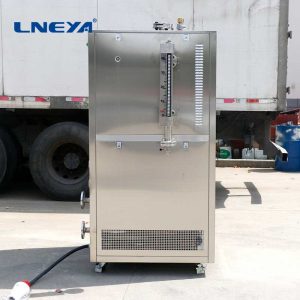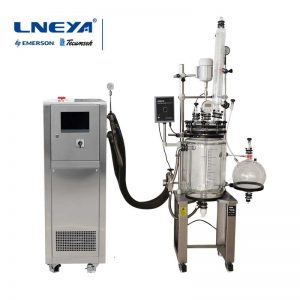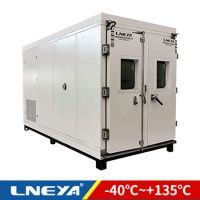Semiconductor Integrated Circuit Chip Packaging Cooling Methods
Contacte-nos hoje para obter a solução perfeita de controlo da temperatura
As chip integration continues to increase, chip packaging density is also increasing, which brings huge challenges to chip heat dissipation. High temperatures will cause chip performance to degrade and even cause chip damage. Therefore, solving the chip packaging heat dissipation problem is a crucial task.
Chip heat dissipation principle
Heat dissipation is the process of transferring heat from one object to another. The principle of chip packaging heat dissipation is to transfer the heat generated inside the chip to the outside of the chip through heat dissipation and release it to the environment. There are three main ways to dissipate heat in chip packages: thermal conduction, convection and radiation.
1. Heat conduction
Thermal conduction refers to the process of transferring heat to another object through thermal conduction from a solid substance. In chip packaging heat dissipation, heat conduction efficiency is improved by adding thermal conductive materials, such as silica gel or metal with high thermal conductivity, between the chip and the heat sink.
2. Convection
Convection is the process of transferring heat from one object to another through the flow of a fluid, such as air or liquid. In chip packaging heat dissipation, heat transfer is accelerated by increasing the air flow around the chip.
3. Radiation
Radiation refers to the process by which an object emits electromagnetic waves or light into the surrounding space. In chip package heat dissipation, heat dissipation efficiency is improved by increasing the surface area of the heat sink and using radiative materials.
![]()
Common chip heat dissipation methods
1. Heat sink
Heat sinks are a common way to dissipate heat. It is a filling film made of metal material and has good thermal conductivity and heat dissipation effect. The heat sink is usually in direct contact with the chip and uses thermally conductive materials to improve heat dissipation efficiency.
2. Cooling fan
Cooling fans are a common method of heat dissipation. It speeds up the transfer of heat by increasing the flow of surrounding air. Cooling fans are usually used together with heat sinks or radiators to improve heat dissipation efficiency.
3. Liquid cooling
Night cooling is a more efficient way of cooling. It circulates fluid to transfer the heat generated by the chip into a heat sink and releases it to the environment. Liquid cooling usually requires specialized heat dissipation devices and is therefore more expensive.
4. Heat pipe cooling
Heat pipe heat dissipation is a more efficient way of heat dissipation. It uses the good thermal conductivity of the heat pipe to transfer the heat generated by the chip to the heat sink and releases it to the environment. Heat pipe cooling is less expensive than liquid cooling, but is slightly less efficient.
5. Heat pump cooling
Heat pump cooling is an efficient way to dissipate heat. It uses the refrigeration principle of a heat pump to transfer the heat generated by the chip to the environment. Heat pumps are more expensive to dissipate heat, but they are also very efficient.
Chip cooling solution
1. Optimize chip design
Optimizing chip design is the primary task to solve the heat dissipation problem. When designing the chip, heat dissipation issues should be taken into consideration, and a design solution with low power consumption and low heat loss should be adopted to minimize the heat generated by the chip. In addition, heat sinks, cooling fans and other heat dissipation components can also be used to improve heat dissipation efficiency.
2. Use high thermal conductivity materials
In order to improve the heat dissipation effect of chip packaging, high thermal conductivity materials can be used, such as diamond, silicon carbide, etc. These materials have good thermal conductivity and can effectively transfer the heat generated by the chip to the heat sink.
3. Optimize radiator design
The heat sink is an important part of the heat dissipation of the chip package. In order to improve heat dissipation efficiency, the design of the radiator can be optimized, such as increasing the surface area of the radiator and using high thermal conductivity materials.
4. Use liquid cooling for heat dissipation
Liquid cooling is an efficient way to dissipate heat. In order to improve the heat dissipation efficiency of chip packaging, liquid cooling technology can be used. Liquid cooling usually requires a dedicated heat dissipation device, so the cost is higher.
5. Use heat pipes to dissipate heat
Heat pipe cooling is an efficient way to dissipate heat. In order to improve the heat dissipation efficiency of chip packaging, heat pipe heat dissipation technology can be used. Heat pipe cooling is less expensive than liquid cooling, but is slightly less efficient.
6. Use heat pump for cooling
Heat pump cooling is an efficient way to dissipate heat. In order to improve the heat dissipation efficiency of chip packaging, heat pump heat dissipation technology can be used. Heat pumps are more expensive to dissipate heat, but they are also very efficient.
7. Optimize cooling fan design
The cooling fan is an important part of the chip package heat dissipation. In order to improve the heat dissipation efficiency, the design of the cooling fan can be optimized, such as increasing the number of fan blades and reducing noise.
Chip packaging heat dissipation is a very important issue. When solving chip packaging heat dissipation problems, we can use a variety of different heat dissipation methods, such as heat sinks, cooling fans, liquid cooling, heat pipes, heat pumps, etc. In addition, heat dissipation efficiency can also be improved by optimizing chip design, using high thermal conductivity materials, optimizing the design of radiators and heat dissipation area fans. Different heat dissipation methods have different advantages and disadvantages. We need to choose the most appropriate method to solve the chip packaging heat dissipation problem according to the specific situation.
Fornecemos a conceção e o fabrico de sistemas completos de controlo de temperatura. Desde modelos standard a produtos personalizados completos até 900 . Somos especializados no serviço ao cliente e dedicamo-nos a ajudar cada cliente a ter o sistema de controlo de temperatura ideal para as suas necessidades específicas.
Fornecemos soluções personalizadas não padronizadas. Estão disponíveis chillers de refrigeração simples e unidades combinadas de refrigeração e aquecimento.
Correio eletrónico: info@lneya.com ID WeChat: +8615251628237 WhatsApp: +86 17851209193

 LNEYA
LNEYA
 简体中文
简体中文




















































































